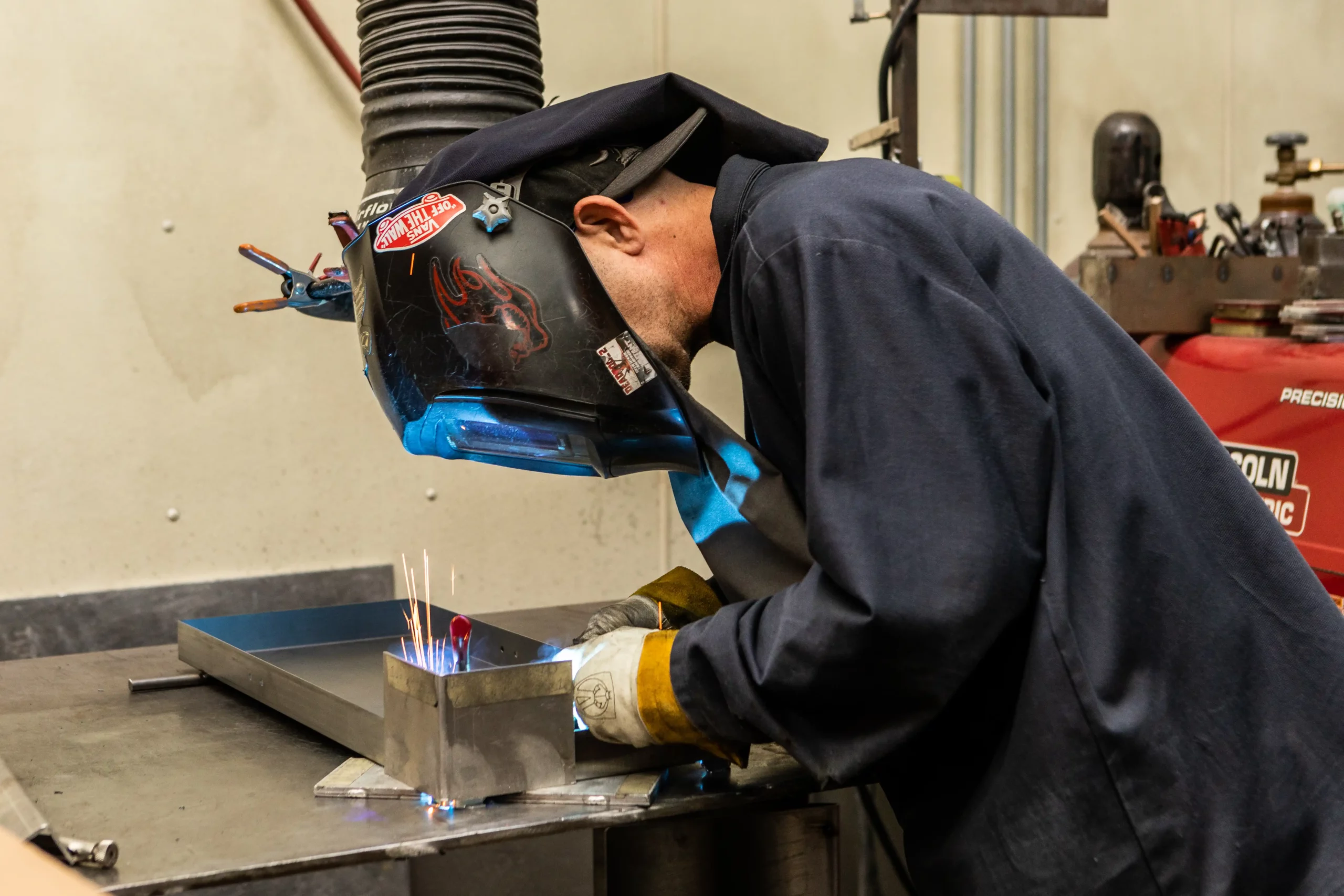Welding WPS: Typical Blunders to Prevent and Just How to Correct Them
Welding WPS: Typical Blunders to Prevent and Just How to Correct Them
Blog Article
Achieving Welding Quality: Introducing the Tricks of WPS Implementation and Optimization
In the world of welding, achieving quality is a pursuit that depends upon the meticulous implementation and optimization of Welding Procedure Specs (WPS) These foundational papers offer as the backbone of welding operations, dictating the treatments and specifications required for generating high-grade welds continually. Nevertheless, the keys to unlocking the complete possibility of WPS lie not just in understanding its value but additionally in understanding the details of its application and optimization. By diving into the crucial elements, methods, difficulties, and ideal techniques associated with WPS, a globe of welding quality awaits those that are eager to discover its depths.
Significance of WPS in Welding
The Value of Welding Treatment Requirements (WPS) in the welding market can not be overstated, acting as the backbone for ensuring uniformity, quality, and security in welding operations. A WPS gives comprehensive guidelines on how welding is to be accomplished, including vital variables such as materials, welding procedures, joint style, filler metals, interpass and preheat temperatures, welding currents, voltages, travel rates, and a lot more. By sticking to a distinct WPS, welders can keep uniformity in their work, leading to constant weld top quality throughout different tasks.

Key Aspects of WPS
Talking about the indispensable elements of a welding procedure specification (WPS) is vital for recognizing its function in welding operations. One important element of a WPS is the welding procedure specification, which details the certain welding procedures to be utilized, such as gas tungsten arc welding (GTAW) or shielded steel arc welding (SMAW) By including these key elements right into the WPS, welding treatments can be standard, making sure high quality, performance, and safety in welding procedures.
Methods for WPS Optimization

Secondly, training and credentials of welding personnel according to the particular demands of the WPS is critical. Giving comprehensive training programs and making sure that welders are licensed to implement procedures outlined in the WPS can result in higher top quality welds and lowered rework.
Additionally, leveraging modern technology such as welding software and surveillance systems can assist in optimizing WPS. These tools can help in monitoring variables, making sure Continued criteria are within defined restrictions, and giving real-time feedback to welders, allowing them to make immediate changes for improved weld top quality.
Usual Obstacles and Solutions
Facing challenges in applying the strategies for WPS optimization can prevent welding procedures' performance and top quality. One typical difficulty is inadequate training or understanding of the welding procedure specs (WPS) among the welding group.
Another obstacle is the lack of proper documents and record-keeping, which is vital for WPS optimization. Without clear records of welding parameters, products used, and inspection results, it becomes tough to recognize locations for enhancement and guarantee uniformity in welding processes. Executing a durable paperwork system, such as electronic welding management software program, can aid improve record-keeping and promote data evaluation for continual improvement.
In addition, inconsistent welding equipment calibration and upkeep can present a substantial challenge to WPS optimization. Routine devices checks, calibration, and upkeep routines need to be followed strictly to make certain that welding criteria are accurately regulated and preserved within the defined tolerances (welding WPS). By attending to these common difficulties with aggressive services, welding operations can enhance effectiveness, quality, and general welding quality
Finest Practices for WPS Application
To make sure successful WPS implementation in welding procedures, adherence to industry criteria and precise focus to detail are critical. When launching WPS application, it is important to start by extensively web understanding the particular welding demands of the job. This involves a thorough review of the welding procedure requirements, materials to be welded, and the ecological problems in which the welding will happen.
When the requirements are clear, the following step is to pick the appropriate welding procedure that lines up with these specs. This entails getting in touch with the relevant codes and criteria, such as those supplied by the American Welding Society (AWS) or the International Organization for Standardization (ISO), to make certain conformity and top quality.
Furthermore, documenting the whole WPS application procedure is necessary for traceability and quality assurance. Thorough documents need to be kept pertaining to welding parameters, product prep work, preheat and interpass temperatures, welding consumables made use of, and any type of inconsistencies from the original treatment. Normal audits and reviews of the WPS can aid recognize locations for enhancement and guarantee recurring optimization of the welding process.


Final Thought
In final thought, the execution and optimization of Welding Procedure Specifications (WPS) is critical for accomplishing welding quality. By understanding the crucial aspects of WPS, carrying out reliable methods for optimization, dealing with typical obstacles, and following best methods, welders can make sure high-quality welds and safe working conditions. It is necessary for specialists in the welding market to focus on the correct execution of WPS to boost total welding efficiency and achieve preferred outcomes.
The Significance of Welding Treatment Specifications (WPS) in the welding industry can not be overstated, serving as the backbone for guaranteeing consistency, high quality, and safety in welding operations. A WPS offers in-depth instructions on how welding is to be carried out, including essential variables such as products, welding procedures, joint design, filler metals, interpass and preheat temperatures, welding currents, voltages, travel rates, and much more. One critical facet view of a WPS is the welding process specification, which describes the details welding procedures to be used, such as gas tungsten arc welding (GTAW) or secured steel arc welding (SMAW) By including these vital elements into the WPS, welding treatments can be standardized, making sure top quality, effectiveness, and security in welding operations.
It is critical for professionals in the welding industry to focus on the appropriate implementation of WPS to enhance general welding performance and achieve desired outcomes.
Report this page